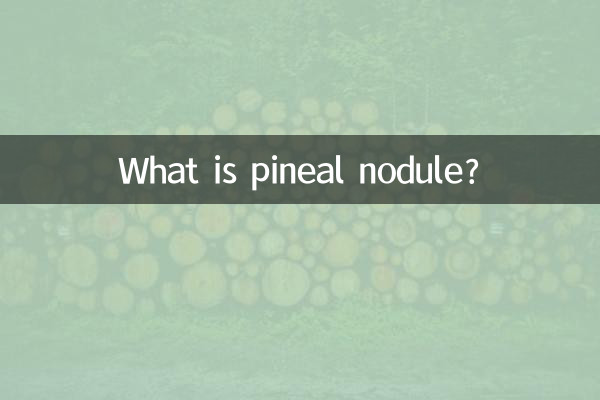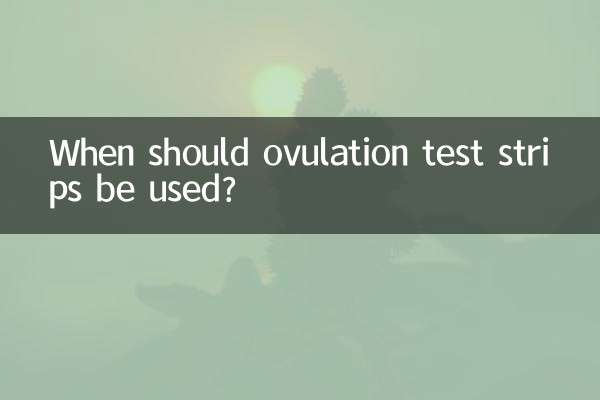What is pineal nodule?
In recent years, with the advancement of medical imaging technology, the detection rate of pineal nodules has gradually increased, becoming one of the hot topics of public concern. This article will provide a detailed interpretation of the definition, cause, symptoms, diagnosis and treatment of pineal nodules, and combine it with popular discussions on the Internet in the past 10 days to help readers fully understand this disease.
1. Definition of pineal tubercle

The pineal gland is a small endocrine gland located in the middle of the brain. It is mainly responsible for secreting melatonin and regulating the body's circadian rhythm. A pineal nodule is an abnormal mass or growth in the pineal area that may be benign or malignant. Its specific nature will need to be determined through further examination.
2. Causes of pineal nodules
The cause of pineal nodules is not fully understood, but it may be related to the following factors:
| Cause type | Specific instructions |
|---|---|
| congenital factors | Some pineal nodules are associated with abnormal embryonic development |
| neoplastic lesions | Including pineal cell tumors, germ cell tumors, etc. |
| inflammation or infection | Central Nervous System Infections May Cause Abnormalities in the Pineal Region |
| other factors | Non-neoplastic lesions such as calcifications and cysts |
3. Symptoms of pineal nodules
Most pineal nodules are asymptomatic and are often discovered incidentally during imaging examinations. However, if the nodule is large or malignant, the following symptoms may occur:
| Symptom type | Specific performance |
|---|---|
| neurological symptoms | Headache, nausea, vomiting (due to obstruction of cerebrospinal fluid circulation) |
| endocrine symptoms | Precocious puberty (common in children), sleep disorders |
| visual impairment | Double vision, decreased vision (oppression of optic nerve) |
4. Diagnosis of pineal nodules
The diagnosis of pineal nodules mainly relies on imaging examinations and laboratory tests:
| Check method | effect |
|---|---|
| Head CT | Initial screening for abnormalities in the pineal region |
| Brain MRI | Display the nodule morphology and surrounding structures more clearly |
| cerebrospinal fluid examination | Help identify the nature of tumors |
| Hormone level testing | Assess whether endocrine function is affected |
5. Treatment of pineal nodules
The treatment plan needs to be formulated based on the nature of the nodule and the patient’s specific conditions:
| Treatment | Applicable situations |
|---|---|
| Observe regularly | Asymptomatic small nodules, regular review |
| surgical treatment | Symptomatic or suspected malignant nodules |
| radiation therapy | Tumor types that are sensitive to radiation therapy |
| drug treatment | Regulation of endocrine symptoms |
6. Hot topics of discussion on the entire network in the past 10 days
Through monitoring of major medical forums and social platforms, we found that recent discussions about pineal nodules mainly focus on the following aspects:
1.The relationship between pineal nodules and melatonin: Many netizens are concerned about whether nodules will affect melatonin secretion, leading to insomnia and other problems.
2.Peculiarities of pineal tubercle in children: Due to the important role of the pineal gland in children's growth and development, the diagnosis and treatment of pediatric patients has attracted much attention.
3.Follow-up strategies for pineal nodules: For small nodules that do not require immediate treatment, the choice of follow-up intervals and examination methods has become a hot topic.
4.Application of new diagnostic technologies: The value of advanced imaging technologies such as PET-CT in the differential diagnosis of pineal nodules.
7. Expert advice
In response to common questions from netizens, medical experts put forward the following suggestions:
1. There is no need to panic when pineal nodules are discovered accidentally, as most are benign lesions.
2. Regular follow-up is crucial to detect nodule changes in time.
3. Seek medical treatment promptly when relevant symptoms occur to avoid delaying treatment.
4. Treatment plans should be individualized and developed by a multidisciplinary team.
Conclusion
As a disease that may affect important brain functions, pineal nodules require sufficient attention, but there is no need to worry too much. With scientific diagnosis and reasonable treatment, most patients have a good prognosis. The public is advised to maintain a healthy lifestyle, undergo regular physical examinations, and seek medical attention promptly if problems are discovered.

check the details

check the details